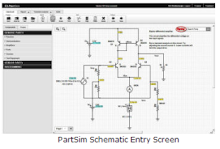
I have a friend who is crazy about timelapse photography. Lately he has been experimenting with motion control camera equipment to make his shots more dynamic . Most of his gear is built from combining off the self components in different ways. Nick is wanting more control out of his devices. So I introduced him to the world of electronics and micro controllers.
Now we are endevouring to break some new ground in timelapse (at least for us ;) The first task I have been appointed with is to come up with a way to go from no camera motion to full camera motion in the smoothest possible way.
Below is a snippet of Arduino code utilizing the smoothstep function. I very powerful formula for smoothing the interpolation from one value to another. Also check out this post for a python example video of the same formula
Check out some of Nick's beautiful timelapse work at nickgraalman.com
For more info and pics on the smoothstep method check out this link. This code is also featured on the Arduino Playground Wiki in the Code Library and Tutorials Section
///////////////////////////////////////
// Smoothstep Interpolation Example //
///////////////////////////////////////
// Dan Thompson 2009
//
// Inpired by the code and chat on this site.
// http://sol.gfxile.net/interpolation/index.html
//
// Use this code at your own risk.
//
// This sketch was written with motion controlled timelapse photography
// in mind. I have tried to make it generic enough to understand the smoothstep
// concept so that one might adapt this powerful formula in other areas as well.
//
// For the full tutorial visit http://danthompsonsblog.blogspot.com/
//
// Usage:
// 1. Upload the sketch to the Arduino.
// 2. Click on the Serial monitor to see some visual feed back of the SMOOTHSTEP function.
// 3. Scroll throught the print out to see the SMOOTHSTEP curve.
// 4. Play with the code and addapt it to your needs! ;)
#define SMOOTHSTEP(x) ((x) * (x) * (3 - 2 * (x))) //SMOOTHSTEP expression.
int j = 0; //Just an Iterator.
int i = 0; //Just another Iterator.
float A = 0.0; //Input Min Value
float B = 100.0; //Input Max Value
float X; //final smoothstepped value
float v; //smoothstep expression variable
float N = 100.0; //number of steps
void setup() {
Serial.begin(9600); //establish serial connection for debugging
}
void loop()
{
if (j < N) // Keep looping until we hit the pre-defined max number of steps
{
v = j / N; // Iteration divided by the number of steps.
v = SMOOTHSTEP(v); // Run the smoothstep expression on v.
X = (B * v) + (A * (1 - v)); // Run the linear interpolation expression using the current smoothstep result.
for ( i=0; i < X ; i++) // This loop could the relevant code for each time your motor steps.
{
Serial.print("1"); //Prints the number "1" for each step.
}
Serial.print(" "); //Puts a space between each line of steps and their corresponding float value
Serial.println(X); // prints the soothstepped value
Serial.println("CLICK!!!"); // this could be where you trigger your timelapse shutter
j++; // Increments j by 1.
}
}









